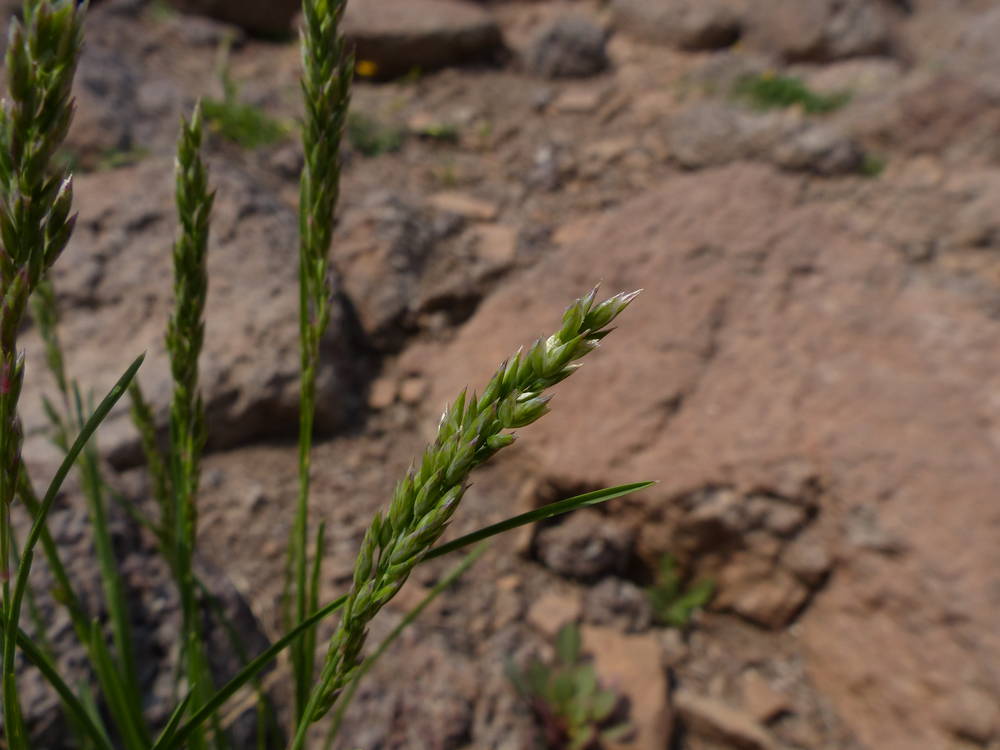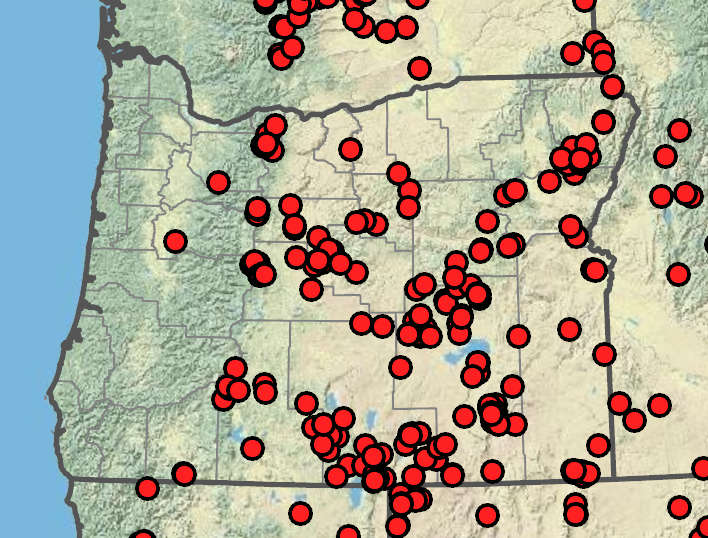Poa cusickii
Poa piperi
Cusick's bluegrass
Piper's bluegrass
0.5–1.8 mm thick;
nodes terete, 0–2 exserted.
nodes terete, 0–1 exserted.
intravaginal or intra- and extravaginal.
extra- and intravaginal.
sheaths closed 25–75% of their length, bases of basal sheaths glabrous;
collars smooth or scabrous, glabrous, ligules of cauline leaves 1–3(6)mm;
tips truncate to acute, ligules of sterile shoots 0.2– 0.5(2.5)mm;
tips usually truncate;
blades involute to flat, 0.2– 3.5 mm wide; all about equal or the upper ones slightly reduced in length;
upper surface usually densely scabrous or hispidulous to softly puberulent, infrequently nearly smooth and glabrous;
lower surface smooth or scabrous; uppermost blade 0.5–5(6)cm.
sheaths closed 33–50% of their length, bases of basal sheaths glabrous, collars of at least some leaves usually sparsely short-hairy;
ligules 1–2 mm, blades of tillers to 40 cm long;
upper surface moderately to densely scabrous or minutely hairy on and between the veins;
cauline blades involute, 1–3 mm wide;
lower surfaces smooth;
upper surfaces sometimes sparsely hairy;
blades much reduced higher on the culm; uppermost blades 1–4.5 cm.
usually erect, tightly or loosely contracted, narrowly lanceoloid to ovoid, 2–10(12) cm;
spikelets 10–100;
branches erect or steeply ascending, 0.5–4(5)cm long, 1–3(5) per node, with 1–15 spikelets.
erect to nodding, lanceoloid to ovoid, loosely contracted; sparse, 4–8 cm;
spikelets 18–60;
branches ascending; lax, 3–8 cm long, 1–2 per node, with 3–8 spikelets.
broadly lanceolate to narrowly ovate; to 3 times as long as wide; (3)4–10 mm;
florets 2–6;
rachilla internodes 0.5–1.2 mm long.
6–9(11)mm; to 3 times as long as wide;
florets 2–5(7);
rachilla internodes 1–2 mm long.
lanceolate;
lower glumes 3-veined, distinctly shorter than the lowest lemma.
subequal;
lower glumes 3-veined.
glabrous or with short; sparse, sometimes diffuse cobwebby hairs less than 25% of the lemma length.
with diffuse; soft cobwebby hairs about 50% as long as the lemma.
lanceolate to broadly lanceolate; (3)4–7 mm, distinctly keeled, membranous; smooth or sparsely to densely scabrous, glabrous throughout, or keels and/or marginal veins softly puberulent near the base;
tips acute.
lanceolate, 4–6(7)mm, distinctly keeled, glabrous throughout; smooth or sparsely to moderately finely scabrous;
keels scabrous;
tips acute.
vestigial and 0.1–0.2 mm, aborted late in development, or well developed and 2–3.5 mm.
vestigial and 0.1–0.2 mm, or 2–3 mm.
=28.
Poa cusickii
Poa piperi
4 subspecies.
Poa cusickii is a common upland bluegrass with a dense inflorescence. It is usually densely cespitose, though some plants may have short rhizomes. Similar P. fendleriana has reduced uppermost flag blades, and lemmas with silky hairs on the keels and marginal veins. Poa leibergii has narrower leaves and usually longer ligules. Poa wheeleri can be misidentified as P. cusickii if the specimen is collected without its distinctive scabrous leaf sheaths. Poa pringlei, restricted to southwestern Oregon near the California border, has longer ligules, sheaths closed to about a third their length, and glabrous (to scabrous) lemmas. It is dioecious, whereas P. cusickii plants are bisexual or entirely pistillate.
Forest openings on serpentine soils. 300–1600m. CR, Sisk. CA. Native.
Poa piperi is a dioecious, usually glaucous grass with nearly transparent glumes and cobwebby callus hairs.
Rob Soreng, Barbara Wilson, Richard Brainerd, Nick Otting
Rob Soreng, Barbara Wilson, Richard Brainerd, Nick Otting
- Local floras:
BC,
CA,
OR,
WA
- Local Web sites:
CalFlora,
CalPhotos,
Flora NW,
PNW Herbaria
WildflowerSearch
iNaturalist (observations)
USDA Plants Database
- LBJ Wildflower Center
- SEINet
- Plants of the World Online
- Encyclopedia of Life
- Wikipedia
- Google Image Search





